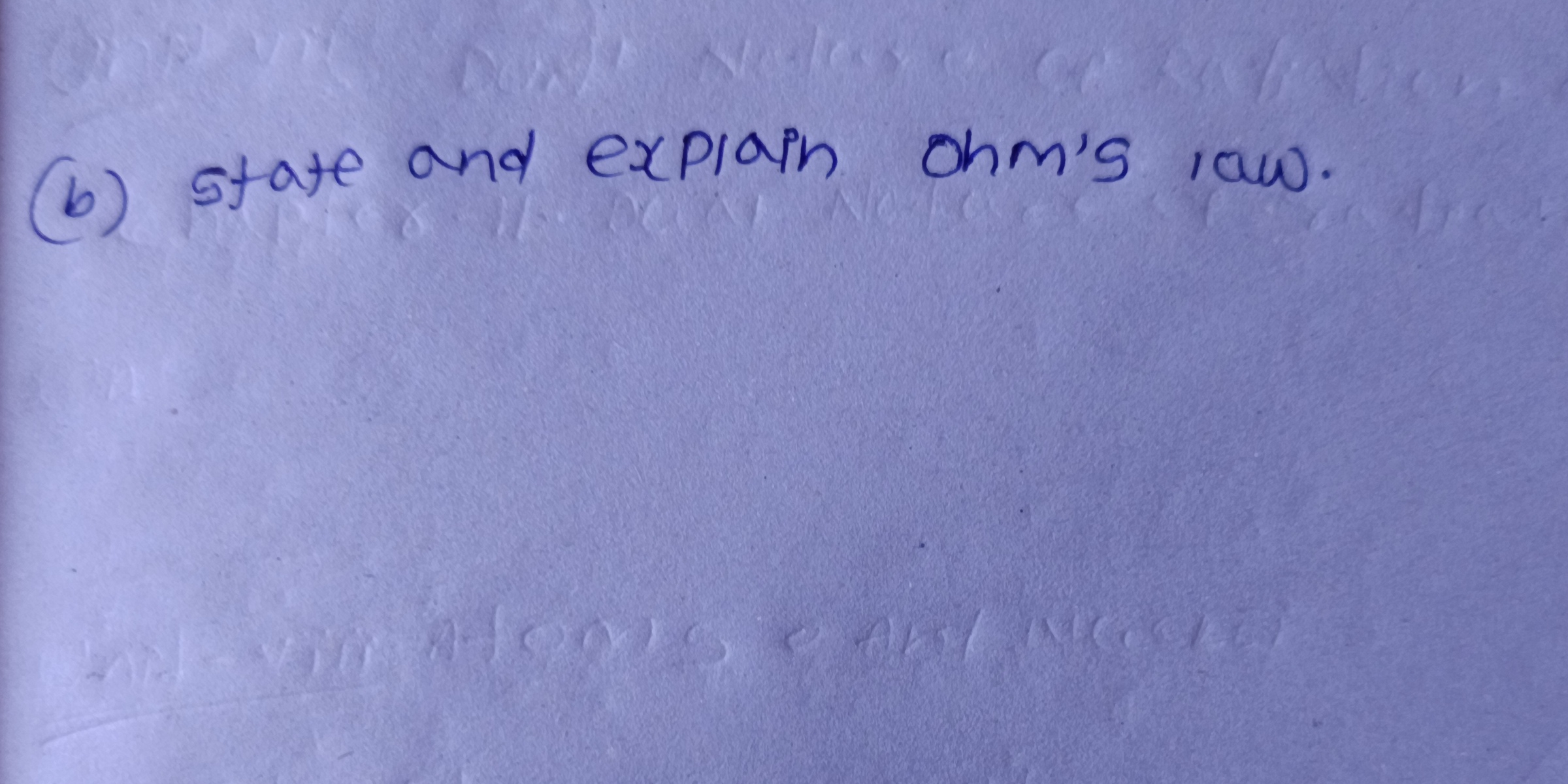State and explain Ohm's law.

Understand the Problem
The question is asking to state and explain Ohm's law, which involves defining the law and providing an explanation of how it relates voltage, current, and resistance in an electric circuit.
Answer
Ohm's Law: V = IR, showing current (I) is proportional to voltage (V) at constant temperature.
Ohm's Law states that the current through a conductor is directly proportional to the voltage across it, provided the temperature remains constant. It is expressed with the formula V = IR, where V is voltage, I is current, and R is resistance.
Answer for screen readers
Ohm's Law states that the current through a conductor is directly proportional to the voltage across it, provided the temperature remains constant. It is expressed with the formula V = IR, where V is voltage, I is current, and R is resistance.
More Information
Ohm's Law is fundamental in electrical engineering and helps in designing circuits by determining resistance, allowing for voltage and current calculations in circuits.
Tips
A common mistake is not considering that Ohm's Law assumes temperature remains constant.
Sources
- Ohm's Law - Statement, Formula, Solved Examples, Verification, FAQs - byjus.com
- Ohm's law - Wikipedia - en.wikipedia.org
AI-generated content may contain errors. Please verify critical information